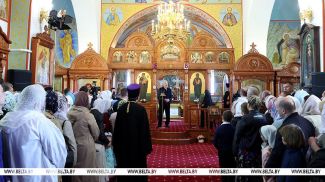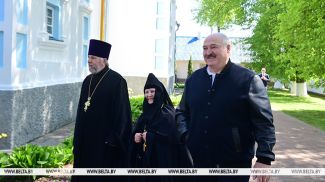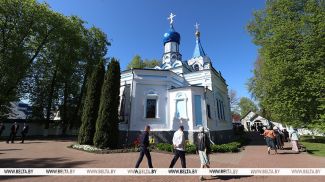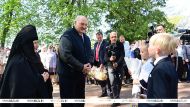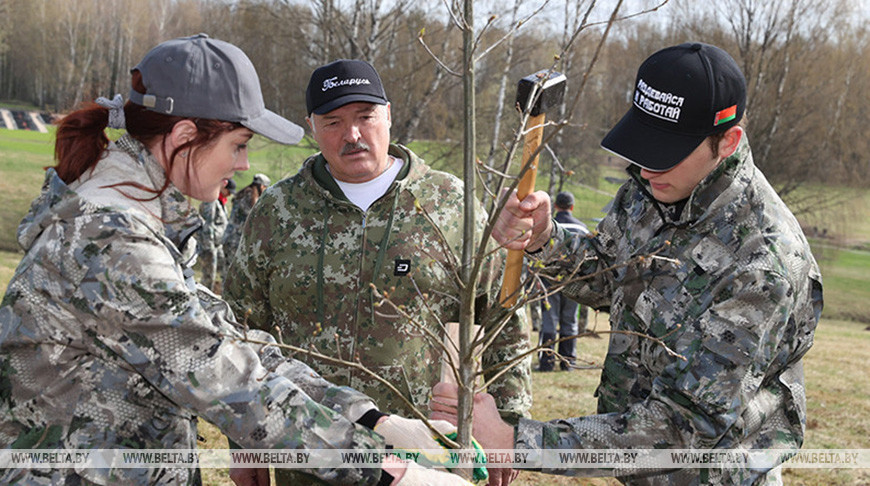
Do you know what foreign visitors see as the calling card of Belarus? Cleanliness and tidiness. Sometimes we ridicule the Soviet past or feel embarrassed about it, but cleanliness and neatness come from there. It is not for nothing that Aleksandr Lukashenko always says: you can't cross out our history, you need to borrow the best from the past and apply it in the present. In the new episode of BelTA’s YouTube project “After The Fact: Lukashenko’s Decision” we will talk about how neatness become a signature feature of Belarus and why Belarusians do not consider subbotniks a relic of the past? What landmark objects emerged in our country thanks to national cleanup days? What projects did the president's team work on? How many trees did Belarusians plant in the spring and for whom did Aleksandr Lukashenko lay an apple orchard?
Why does Belarus hold subbotniks?
Every year at the end of April Belarus conducts the national cleanup day (aka subbotnik). Thousands of enthusiasts – from an ordinary citizen to the head of state – volunteer their time to plant greenery, to work on construction sites, to tidy up memorial complexes and places of military glory. Millions of rubles earned during subbotniks are spent on building social facilities, landscaping historical and cultural sites and monuments.
This tradition did not appear in Belarus out of nowhere. This is something, as the president said, that Belarusians borrowed from the Soviet past. Thanks to subbotniks, the country not only transforms after winter. Belarusians rethought the essence of the movement itself and began to transfer money for national and regional projects.
What projects did Belarusians collect money during subbotniks?
For example, in the late 1990s and early 2000s, the funds earned during subbotniks were spent on the construction and renovation of healthcare facilities, including in the districts contaminated with radionuclides. In 2003, Belarusians supported the construction of the National Library. Almost 3.5 million people took part in the cleanup day and earned about Br7 billion.
In the next two years, the funds were used to restore memorial sites of the Great Patriotic War. The most important of them were the Khatyn Memorial Complex and Brest Hero Fortress. In 2006, the money from a subbotnik was used to purchase equipment for the Mother and Child research and treatment center and to build houses for foster families. A significant part of the money was used on the Minsk Arena construction project.

In 2007, half of the money raised was funneled into the Children of Belarus program and into the renovation of the national children's education and recreation center Zubrenok. The remaining half went to orphanages and boarding schools. In 2009-2012, participants in subbotniks renovated memorial complexes, prepared children's camps for the new season, and landscaped agricultural towns. A year later, all the money raised was used to mitigate the aftermath of the Chernobyl disaster and to construct a new building for the State Museum of the Great Patriotic War History in Minsk. By the way, the Belarusian president also participated in the construction of this building and many other facilities.
What projects did the president's team work on?
Aleksandr Lukashenko took part in the subbotniks to build metro stations, the Minsk Arena and Chizhovka Arena sports complexes, the Lebyazhy water park, a maternity hospital and a children's clinic, and the Rhythmic Gymnastics Olympic Training Center. The head of state also joined the reconstruction of the Dynamo stadium and the construction of the State Flag Square in Minsk.
Aleksandr Lukashenko planted trees in the Stalin Line Historical and Cultural Complex and the Pripyatsky National Park, and landscaped Trofimov’s Spring near the agricultural town of Alexandria where he was raised. “This is my homeland. I know this land across the length and breadth as I walked every inch of it barefoot or grazed cows here. There was a meadow here, it was overgrown much later. Here we picked up firewood. Therefore, every inch here, one might say, was trampled by my feet in the childhood.”

If you follow the logic of his opponents (they say, subbotniks are forced labor), then it turns out that the president worked against his will all the time...Oh, really? Such complaints are usually voiced not at construction sites or on the fields, but on the sofa with a TV remote in hand. Indeed, Aleksandr Lukashenko was right: you can’t force people to work for their homeland.
What does the president thank Belarusians for, in particular, the youth
What else did Belarusians raise money for during subbotniks? Mostly for health care. This includes the construction of a positron emission tomography center and hospitals, re-equipment of children's intensive care units, and the fight against coronavirus. Money was also raised for many projects to preserve historical memory: landscaping of mass graves, Victory Square and Khatyn, restoration of the memorial complex to commemorate the Ozarichi death camp victims. How can one not want to join this work?
“I am grateful to everyone who took part in the reconstruction of the Ola Memorial Complex: our youth, thanks to whom this initiative acquired a national scale, everyone who joined the project on this subbotnik day. Our young people have shown that they do not only spend time in their gadgets, not only shout on the streets of beautiful, cozy Minsk, but they also do such sacred things,” Aleksandr Lukashenko said as he was unveiling the memorial complex in June 2020. “And if someone in the world today chooses to forget the terrible pages of the Second World War, tries to shift the responsibility for what happened, Belarus will preserve true history in stone. Let them come and see and appreciate this holy nation that always fought for honor and justice, even though some of these wars were someone else's wars.”
How much money was raised during the recent subbotnik and how will it be spent?
According to the preliminary estimates, some Br14.5 million was earned during the recent national cleanup day. Due to the ongoing preparations to mark the 80th anniversary of Belarus’ liberation from the Nazis, the money raised during the cleanup day will be spent on the reconstruction of the Memorial to the Children Victims of the War, on a project to set up a national center for patriotic education in the Brest Fortress, on the reconstruction and restoration of memorial complexes, places of military glory located in different regions of the country.
“The amount of funds earned during the national cleanup day increases every year. For example, it was Br9 million in 2020, Br10.4 million in 2021, Br11.8 million in 2022 and Br14 million last year. It should also be noted that the average nominal wages steadily increase as well. This is the main reason why the amount of funds earned on the national cleanup day goes up every year. About 2.4 million people took part in the national cleanup day last year. The biggest contributor is the city of Minsk, both in terms of the number of participants and the money raised,” Irina Bondarenko, Head of the Labor Statistics Directorate of the Belarusian Statistical Committee, said.
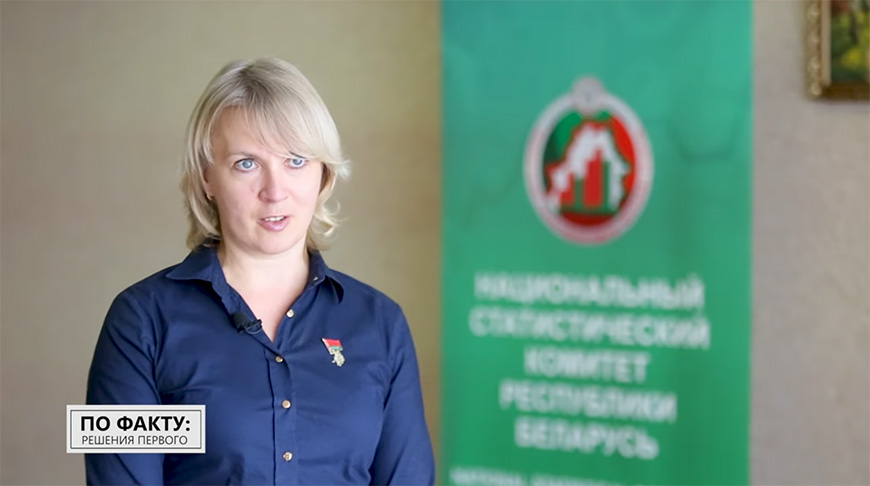
Where did Lukashenko work during the recent national cleanup day?
Aleksandr Lukashenko traveled to his hometown to help plant an apple orchard. The head of state has a special warm attitude towards his hometown and has come here for the national cleanup day more than once.
The head of state asked all participants of the event, including the journalists, to join the work. This is the president's principle: the press pool who cover the president’s activities every day change microphones and cameras for rakes and shovels during the cleanup day. However the head of state decided that the journalists had not done enough work and invited everyone to chop firewood.

“Schoolchildren will take care of the orchard and use the fruits of their labor some time in the future. As I said, every school should have its own garden where kids can work with their hands. This will help them feel more grounded,” Aleksandr Lukashenko said.
How do Belarusians contribute to restoration of the country’s forests?
The national cleanup day in Belarus is preceded by a lot of work to improve cities and towns and protect the environment. These are cleanup, landscaping and tree planting campaigns. In April alone, Belarusians planted more than 37 million trees and cleaned forests of 3,000 cubic meters of garbage. This is quite an accomplishment which can be achieved only by joint efforts.
“The entire population of Belarus is engaged in the campaign: from small children who attend forest pre-schools and kindergartens, to adults, to organizations of different forms of ownership. This year’s campaign has already finished, with more than 80,000 citizens taking part in it. We have planted trees on 4,000 sites. This year we are celebrating the 80th anniversary of Belarus' liberation from the Nazis. In honor of the anniversary we have set up commemorative alleys near the places of military glory, in the cities and rural communities to remind people of their ancestors and their feat in defending their homeland,” Dmitry Torchik, Head of the Forestry Department at the Belarusian Forestry Ministry, said.

Why does Lukashenko truly care about the native land?
The national cleanup day is not the only event of the year when Belarusians team up to give back to their communities. The Belarusian president truly cares about the native land and expects others to do the same. The logic is clear: the present and future of Belarus depend on us.
“You see that Belarusian towns and villages become greener, more beautiful and comfortable. Everything is made with your hands. You are doing all this, first of all, for yourselves, for your children and grandchildren. Together we are creating the country comfortable for life. No wonder that many tourists are impressed by the country’s beauty and cleanness, find something dear to them, something that reminds them of their homelands,” the head of state said at the Alexandria Gathers Friends festival in 2019.
Wherever you are, whatever country you are watching this episode from, please find time to make your community a better place. We do not need millions-strong rallies for the environment, loud speeches or empty statements. We need millions of new trees, clean towns and forests, which means everyday work. Continue the good traditions! If you have happened to forget, revive them.




